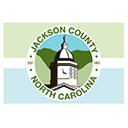October Newspaper Article 2021
go.ncsu.edu/readext?827551
en Español / em Português
El inglés es el idioma de control de esta página. En la medida en que haya algún conflicto entre la traducción al inglés y la traducción, el inglés prevalece.
Al hacer clic en el enlace de traducción se activa un servicio de traducción gratuito para convertir la página al español. Al igual que con cualquier traducción por Internet, la conversión no es sensible al contexto y puede que no traduzca el texto en su significado original. NC State Extension no garantiza la exactitud del texto traducido. Por favor, tenga en cuenta que algunas aplicaciones y/o servicios pueden no funcionar como se espera cuando se traducen.
Português
Inglês é o idioma de controle desta página. Na medida que haja algum conflito entre o texto original em Inglês e a tradução, o Inglês prevalece.
Ao clicar no link de tradução, um serviço gratuito de tradução será ativado para converter a página para o Português. Como em qualquer tradução pela internet, a conversão não é sensivel ao contexto e pode não ocorrer a tradução para o significado orginal. O serviço de Extensão da Carolina do Norte (NC State Extension) não garante a exatidão do texto traduzido. Por favor, observe que algumas funções ou serviços podem não funcionar como esperado após a tradução.
English
English is the controlling language of this page. To the extent there is any conflict between the English text and the translation, English controls.
Clicking on the translation link activates a free translation service to convert the page to Spanish. As with any Internet translation, the conversion is not context-sensitive and may not translate the text to its original meaning. NC State Extension does not guarantee the accuracy of the translated text. Please note that some applications and/or services may not function as expected when translated.
Collapse ▲Today’s children and youth need us to take action. The news is full of information about whats wrong with our children, and the difficulties they have to face in today’s world. Well, I’m an eternal optimist and I say we can make a difference.
As the 4-H Agent with North Carolina Cooperative Extension it’s my job to provide some educational opportunities for the youth in Jackson County. Every year I make a new plan for programs and this year is no exception. What are the needs? How has COVID changed what youth need? Where should I start?
Whats already working? What do our young people want? While I’m always exploring new program ideas I’m also reaching back to the beginning of the 4-H movement for inspiration.
There is a thorough history of 4-H in the book 4-H: An American Idea, 1900-1980 by Thomas and Marilyn Wessel. In the 1900s educators around the United States “were openly questioning the relevance of public schools to country youngsters.” In response to concerns that children were not learning some basic life skills, Albert B. Graham, superintendent of schools for Springfield Township, Ohio organized
out-of-school clubs whose purpose was to study agricultural science and technology. They were very popular and soon had a membership of 3,000 young people.
During this same time period Farm Institute President Will B. Otwell started a competition to get young people interested in new farming techniques. He offered a one dollar prize to the child who produced the best yield of corn from seed he had collected. "The response was considerable; 500 young boys
requested seed corn for the contest. By 1901 Otwell’s annual corn growing contest had attracted 1,500 boys.” By the time of the 1904 St. Louis Exposition 50,000 entrants competed for a chance to exhibit their corn. Similar contests began popping up around the country and thus were born the “corn clubs”,
soon to become 4-H clubs, for boys in America.
“The principal emphasis in boys club work until 1910 had been on finding a means of conveying new agricultural techniques from experiment stations and land-grant colleges to farm operators. The basic purpose was to improve agricultural techniques and increase production or shift production to other
crops. Girls clubs – confined to canning, sewing, baking and the like – had no such technological goal in itself, but very quickly the canning clubs took on a character different from the boys corn clubs. Girls began as demonstrators of canning techniques, but soon looked at the entire role of women in the home and community. Girls clubs worked to help young women develop self-confidence and a sense of community responsibility, an idea later incorporated into all club work.”
4-H is no longer divided by genders, or just an organization for rural kids. Its clubs and activities can benefit everyone. However, the early corn and canning club concept always gets me thinking about the techniques and life skills boys and girls need in this day and age. Obviously they need skills in computer technology but don’t they still need to know how to sew on a button, or start a fire in the fireplace, or understand where their food comes from? Don’t they still need to develop self-confidence and a sense of community responsibility? Some of the important skills for today are homemaking, conflict resolution, financial management, teamwork, compassion and healthy risk taking. And lets not forget the skills such
as music and reading, nature appreciation, an understanding of heritage, and healthy living.
Its important to know where we’ve been in order to figure out where we’re going. 4-H offers a great opportunity for young people to learn new skills that will help them become successful adults and it provides adults with an opportunity to make a difference. I hope you’ll join me. If you have ideas about
4-H programs, or would like to share your past experiences with 4-H, please contact me at 586-4009 or heather_gordon@ncsu.edu.




